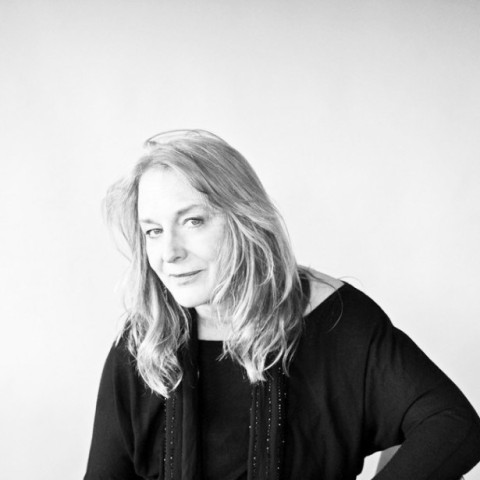
Interviewed by Paul Bilger
When did you decide to become a painter?
I was six when I found a book in my parents’ library on Van Gogh’s paintings at Auvers. I remember closely watching how one stroke of color lapped over another, like tiles. I also remember being caught up in some Gainsborough paintings at the Huntington in Pasadena, at about that time.
Who are your influences? What did you learn from them?
In graduate school I studied with Philip Guston, who was teaching as a visiting artist for a couple of years at Boston University in the late seventies, in fact just before he passed away. I had been floored by a painting of his I saw at the Sheldon Museum (University of Nebraska-Lincoln) when I was about twelve; at that time I vowed I would find a way to study with him. Guston loved to discursively unpack paintings and the painter’s life. Many of the things he said to our tiny cohort of painting grad students in 1977-79 are well documented in the extensive literature on Guston. I remember listening to him talk for hours about Piero della Francesca’s Story of the True Cross in Arezzo. I remember watching the ash drop from his cigarette. I remember thinking a lot about what he might mean when he said that my painting was Gothic, and feeling amused and agnostic about that. I remember how he was always confirming by word and example that the quest in painting was open without limit to pathos, irony, passion,and integrity. He used to say, those hooded figures in my paintings, they’re not (just) the Klan, they are me, they-R-Us.
More broadly in terms of influences, I draw from philosopher Édouard Glissant, his advocacy of ‘opacity,’ and his poetics of relation. Also, I draw literally from, and into drawings and paintings, texts and translations by Aimé and Suzanne Césaire, Christina Sharpe, Tommy Orange, Octavia Butler, Lidia Yuknavitch, Joan Naviyuk Kane, Elizabeth Bishop, Sor Juana, Katja Silverman, Terese Mailhot, and Leslie Marmon Silko. These are, at present, my deep interlocuteurs, my wellsprings. Perhaps this from Glissant best describes the kind of poesis I dream of: “In addition, the poetics of Relation remains forever conjectural and presupposes no ideological stability. It is against the comfortable assurances linked to the supposed excellence of a language. A poetics that is latent, open, multilingual in intention, directly in contact with everything possible…Poetry’s circulation and its action no longer conjecture a given people but the evolution of the planet Earth. That too is a commonplace, one worth repeating.” No less multi-lingual, painting, too, must not seek stability or transparency as an end. Remembering always its epistemological contingency, painting must not insist on its own self-clarification, because then it can be killed, especially in despair, even by my own hand. I must resist absorbing and consuming the global culture of resource exploitation and pervasive, topological violences at large, wherein apex predators seek to devour the uncanny, suppress the vernacular, and kill the unassimilated. I continue to practice trust in my practice, its virtuosity and inductive research, as though to pray that my technical apparatus is coming, cosmologically, through my body as a medium for Gaia and for ‘star junk’ as Lidia calls it. In high school I remember memorizing T. S. Eliot’s poem, “Ash Wednesday.” In it the poet imagines himself “dissembled”, meaning possibly lying, lied to, fake-it-til-you-make-it; but also, by way of reverberation, “dissassembled”. In this condition of being shattered, in a scatter-zone, in shards, I resonate to Eliot’s voice offering ‘my love to the posterity of the desert and the fruit of the gourd/ It is this which recovers/ My guts the strings of my eyes and the indigestible portions / Which the leopards reject…”
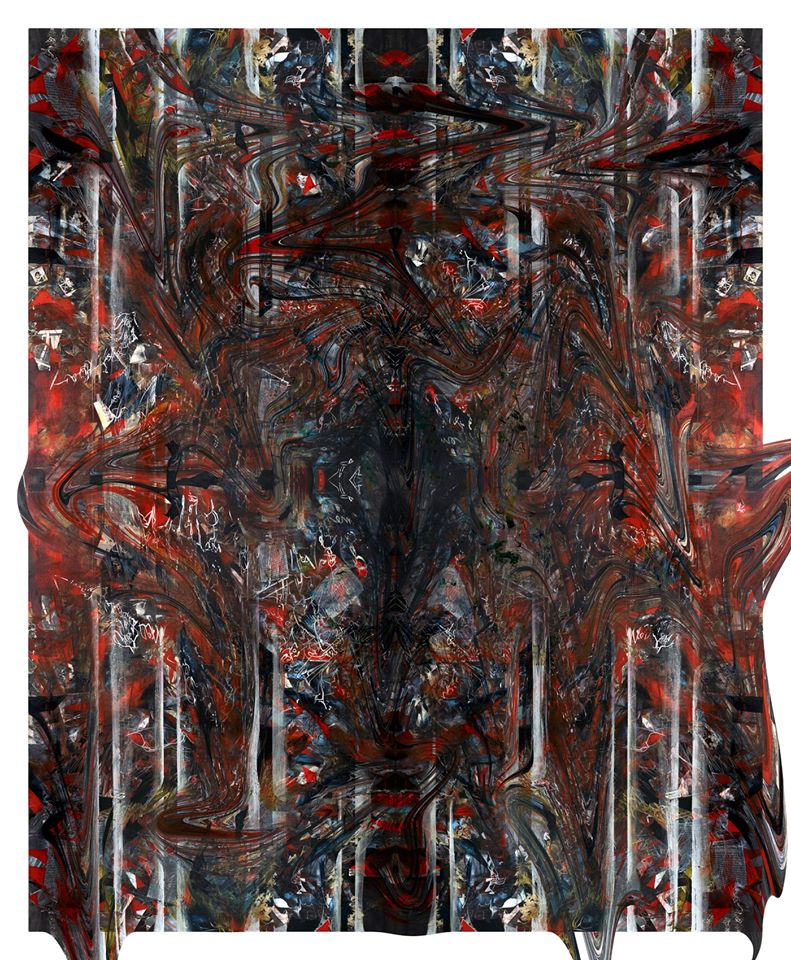 What painting was the greatest struggle for you to complete? What did you learn about yourself, the process, or art in overcoming that challenge?
What painting was the greatest struggle for you to complete? What did you learn about yourself, the process, or art in overcoming that challenge?
Specifically, there was a painting that morphed through four or five distinct stages, beginning in late winter of 2018; and as I often do, I kept track of the different stages with detailed photographs both of the whole canvas. The fact that a painting goes through that many changes of motif usually indicates that I’m trying to find new grounding, a new level. So this one was inspired by reading, once again– this time I was involved with Christina Sharpe’s “In the Wake: On Blackness and Being” (Duke 2016). This book challenged me in a way that cut very deep into my painter’s mind as it deals with the ‘wake’ of transatlantic black slavery in stark visual terms, ‘ship’, ‘hold’, ‘wake’, and ‘weather’. One specific image Sharpe introduces is that of a refugee girl in Haiti, who is bound to be evacuated from the earthquake disaster of 2010 in Port-au-Prince. Unknown and unnamed, she stares at us with six or seven year old eyes, blankly; on her forehead, someone has placed masking tape written on with the word, “SHIP.” I am transfixed by this photograph and by Sharpe’s prophetic, critical voice as she unpacks the implications of that ‘SHIP”. So this was very near, close to the bone, cutting into the tendency I have for writing words into the or on top of the ‘body’ of the canvas… like a tattoo or an inscription on the body, if the canvas is like, or a stand in for, somatic presencing.
Feeling a call into empathy, I wanted to try to draw through an imagined journey of the Girl with Ship on her Forehead (this became the working title of the painting). Like the performance artist-as-painter, Carolee Schneeman, I find painting is a haptic field in making gestures, and this field is mediated through my body, a situation or stage for playing the materials of paint, ink, graphite, and collage as instrumentation or as writing through the body. Girl with Ship on her Forehead was a crisis painting. I couldn’t abandon the image of the Girl even as I certainly could in no way represent her. Relative to my subjective ethos, the accident- or good fortune- of encountering the photograph and Sharpe’s text could never be neutral. Journeying, implicated and bound ‘with’ the Girl, lead to four or five distinct tableaux on the same canvas, successively, over a period of about sixteen months. The Girl did not appear as a representative image in any of them. They were more like fields. Finally the canvas got so heavily encrusted with layers of paint and collage that it was not technically viable, not physically structured well enough to survive. I was not very surprised that it didn’t hold up but the journey was worth it. Ideologically and affectively, it helped me process the heavy content of “In the Wake” and to come out on the other side with a changed, charged consciousness. Meanwhile, there were the photographs, sitting there on my hard drive.
Then, this week, I started to play with the photographs using very artificial even cheesy Photoshop effects. I wasn’t really even paying close attention to the digital toolbox, rather was in a distracted state of mind while reading the Guardian and social media on COVID-19, just trying to flow with the news of the continuing calamity, late at night. To my surprise, as I was in an all-too-familiar, post-traumatic state of ‘discognition’ (as my curator friend James MacDevitt* calls it)… one of the photographs had morphed into something ‘alive’… a sense, in the abstract topographic field, of a figure approaching. Over the next two days I made two more in the same way, in this state of ‘discognition’. There may be more to come.
(*James MacDevitt, “Pattern Discognition,” in Christina McPhee: A Commonplace Book (Punctum Books, 2017).
I’m looking at your recent works, such as Secret Loves of Leopard Sharks, and see that your work often suggests recognizable forms, only to undermine those forms with a kind of instability and dynamism. This is partly an effect of the title, but there is a way you appear to play with organic curves and lines in a way that suggests both natural life and language. Could you comment on the titling of the works, and also what you’re after with these emergent but obscure forms?
For Secret Loves of Leopard Sharks, I copied a diagram, sourced online, of leopard sharks involved in a mating pattern, which was observed in shallows at the Pacific coast near La Jolla, California. Apparently, it’s very rare for human observers to notice them engaged in sex. Watching them swim in the huge kelp tanks at the Monterey Bay Aquarium, I”m inspired to search for them in the wild offshore not far from my studio, near Morro Bay– to no avail. Though prolific, they are secretive. Their erotic patterns, movements, life ways may be thought of as a choreography or, like a dance notation in human terms. They persist despite mercury contamination in shallow coastal waters. Direct depiction of them belies their elusive resistance to portraiture, or image capture, in the instance of their mating dance. Painting is a pseudo-tracking of their dance.
Do you often draw inspiration from such natural movements? Are you generally more after the dynamism of the things your art engages than their recognizable form? Am I right in thinking much of your art points to what resists direct visual representation?
Last summer I painted a large canvas that began as a scattered pattern of collage fragments from oceanographic data visualizations– about how the ocean is acidifying. I painted lines connecting the fragments over a very dark field of purple blue. The depth of field in the image started to swallow up the data fragments. A figurative impulse came, then, with a sense that I wanted to draw orcas– a mother and (dead) baby, after the orca who circled Puget Sound just offshore Seattle, carrying her baby after it had starved to death. Eventually I painted full representations of the two figures. But, in the process of trying to illustrate the marine crisis, I found that the figures were too explicit: nothing had been left to chance– in a way they were like death masks. A dynamic complex of problems around visualization of hyper-objective conditions in flux– the oceans dying — almost has to leave open chance, chance operations, accidents, and occlusions. Cara Carter observes: “We’re literally made up of others including the bits of dust and dirt that we swallow, the tissues and membranes and members. If everything inside and outside, before, after through and around me is other, how am I not also other and not I, but we? Other is a fiction, an abstraction, as I am an abstraction. I believe that it is a primary violence to insist otherwise.” So that’s the problem. It feels like a primary violence to me to force the painting into a complete illustration of a working concept. The painting as an object offers something alongside its image, or something in excess of its image. I mean that I can’t be happy when the painting feels forced into a system that relies more on normative standards around what is a ‘recognizable form” and less on language or math-like structures. If ‘I’ is an abstraction, as Cara contends, yet ‘how am I not also other’, then, I just want to make an object whose main gambit is deep space wherein figures are events, are like magnets, or traps. They open out and close down, they spring and clamp, they mobilize.
I think that’s very insightful. So the I is a “well founded phenomenon,” somewhat like a rainbow. It is an effect and an idea, but not a reality. Following that thought, representation seems to require a stabilized opposition of an enduring subject (‘I’) and represented objects (the Orca and her dead baby) . But the subject– the I– is not itself a reality, and the reality of any represented object is obscured insofar as it is posited to be just as it is represented. As you suggest, perhaps reality itself is better thought of as a series of events. This would then require a rethinking of the relation between a painting and its “aboutness.” Does it still make sense to say the painting is about the whale and her calf? Is it, perhaps, the case that something like a representational stance, common to most viewers of your painting, is being intervened upon. In other words, most of us have a representation of what orcas are supposed to be, but your painting intervenes upon that representation in relation to this other representation of the orca and her dead calf. But both representations are subverted and destabilized to unmask the violence of the representation’s fixation of subjectivity and the stabilized (and already too-well-known) subject matter. We already presume to know these whales as animals and as tourist attractions, and take smug comfort in the pity and detached interest we can take in their plight. But that comfort is part of the crisis.
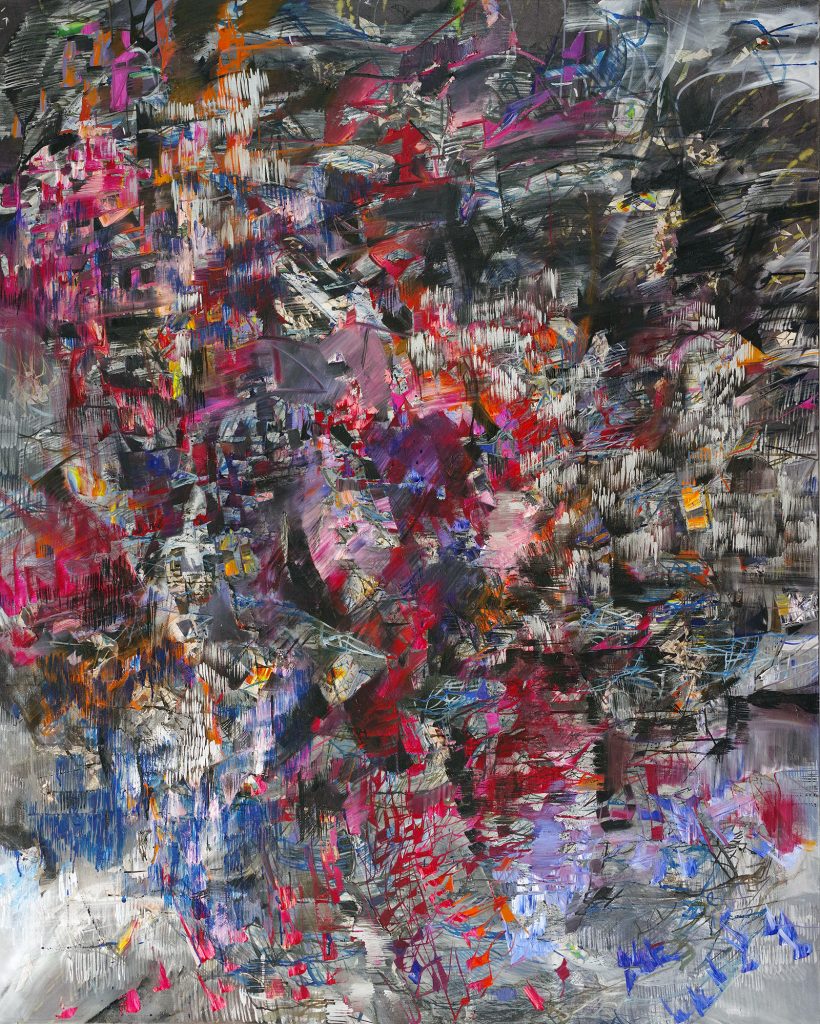
Yes, it came upon me as a kind of crisis. ‘Showing’ the whales was almost like hastening their actual death! in the sense of, the lack of love inside the representation, every move to delineate more about their beautiful forms enforced a split between me (us) and them (they). The painting process opened to a possibility of Otherness/Closeness without trying to represent them as species. To put it as an event, ‘they’ submerged under deep waters. The painting was then the evidence or accumulated details of their traces left after they disappear.
Like a mediation of layers of closeness and distance, the painting became “Marroire” (an ocean-mirror).
Do you think that this is a kind of encounter that is threatened or endangered in modern, technological culture? How can artists and other creatives instill a kind of patience for this opacity and withdrawal? Am I right that patience is part of this process? What else might we be missing?
No, actually I think that the opportunities multiply for an encounter with life-beings and transformations of life in and outside of whatever boundaries and limits we imagine. Multiply because if anything we can feel kinship across time and space with other beings not ourselves through the medium and duration of calamity, like the 2020 coronovirus pandemic. A lot of the terror comes from the sensation of not knowing how to manage risk, how to avoid morbidity, death; how to protect those we love. Even as we face these fears we sense we are not alone. Patience is so important in these moments of respecting the unknown, the as-yet to come. It’s so scary and at the same time, I want ‘to imagine generosity across time and space,’ as the artist Beatriz Cortez describes it in her thinking around Spinoza’s ethics of survival. Patience is about carefully trusting in the process, in my studio, considering carefully and not acting on fear. Or often, acknowledging fear while not acting on it. Here we are, at a few months notice, come to a standstill as we realize the opacity of a form of ‘life’ that’s not even alive if or until it finds a way to pierce our bodies’ myriad cell walls. In this stillness of contemplating this fact, this reality, I find myself missing very little. I feel as if all the study and research and patient learning of craft and technique in my life has come to this still point, or duration, in which I can somehow fluidly move all the elements together, and together in concert with so many incredible artists who have come before me and will come after. Every time I draw on the experience of a poem, as in my current series around the Enigma poems of the seventeenth century poet, Sor Juana Inéz de la Cruz, I’m engaged in making something live, alive. Because I am reading her, and her writing is flowing through my consciousness and into abstract mark making– this is an act of creation, of making new life; as Beatriz also says, I am giving new meanings to the text because I am reading it. As such reading is an act of creation. That means that artists ‘instill’ – as you put it – something of new life in whatever they make and leave behind. The artist will have to withdraw, she is always opaque in many or most levels and by all measures, and still, the materials she leaves in the wake of her leaving become alive as they are taken up by beings beyond her, possibly beyond whatever we try to imagine as human.
Thank you for taking the time to field my questions.
_________________________
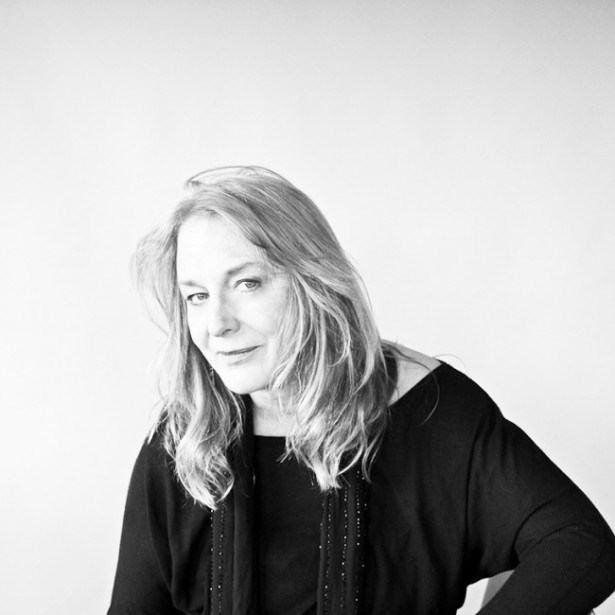 Christina McPhee is a Southern California-based painter. Her paintings move from within a matrix of abstraction, shadowing figures and contingent effects; they emulate potential forms of life, in various systems and territories, and in real and imagined ecologies. Her work poses the question: how does a map of the Anthropocene read? Museum collections include Whitney Museum of American Art, New Museum-Rhizome Artbase, and International Center for Photography, New York; Kemper Museum of Contemporary Art, Kansas City; and Thresholds New Media Collection, Scotland. Solo museum exhibitions include the American University Museum, Washington, D.C., and Bildmuseet, Umeå, Sweden.
Christina McPhee is a Southern California-based painter. Her paintings move from within a matrix of abstraction, shadowing figures and contingent effects; they emulate potential forms of life, in various systems and territories, and in real and imagined ecologies. Her work poses the question: how does a map of the Anthropocene read? Museum collections include Whitney Museum of American Art, New Museum-Rhizome Artbase, and International Center for Photography, New York; Kemper Museum of Contemporary Art, Kansas City; and Thresholds New Media Collection, Scotland. Solo museum exhibitions include the American University Museum, Washington, D.C., and Bildmuseet, Umeå, Sweden.
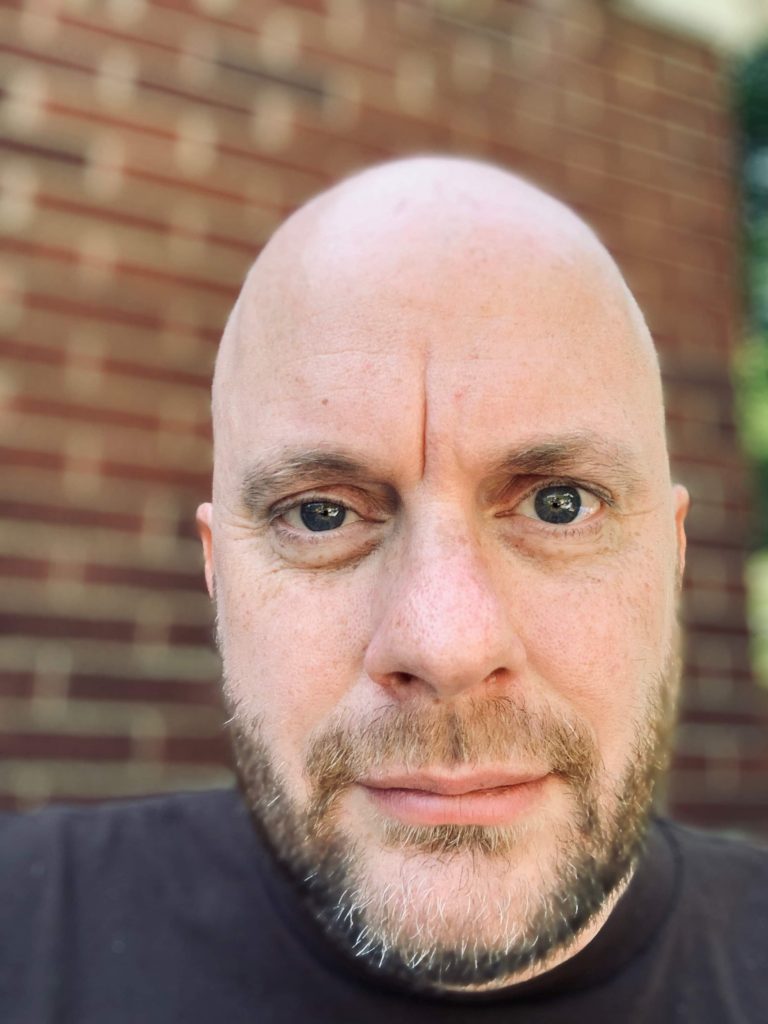 Paul Bilger’s photography has appeared at Qarrtsiluni, Brevity, and Kompresja. His work has also been featured on music releases by Dead Voices on Air and Autistici. When not taking pictures, he is a lecturer in philosophy and film theory at Chatham University. He is the art director at SmokeLong Quarterly.
Paul Bilger’s photography has appeared at Qarrtsiluni, Brevity, and Kompresja. His work has also been featured on music releases by Dead Voices on Air and Autistici. When not taking pictures, he is a lecturer in philosophy and film theory at Chatham University. He is the art director at SmokeLong Quarterly.

 The core workshop of SmokeLong Fitness is all in writing, so you can take part from anywhere at anytime. We are excited about creating a supportive, consistent and structured environment for flash writers to work on their craft in a community. We are thrilled and proud to say that our workshop participants have won, placed, or been listed in every major flash competition. Community works.
The core workshop of SmokeLong Fitness is all in writing, so you can take part from anywhere at anytime. We are excited about creating a supportive, consistent and structured environment for flash writers to work on their craft in a community. We are thrilled and proud to say that our workshop participants have won, placed, or been listed in every major flash competition. Community works.